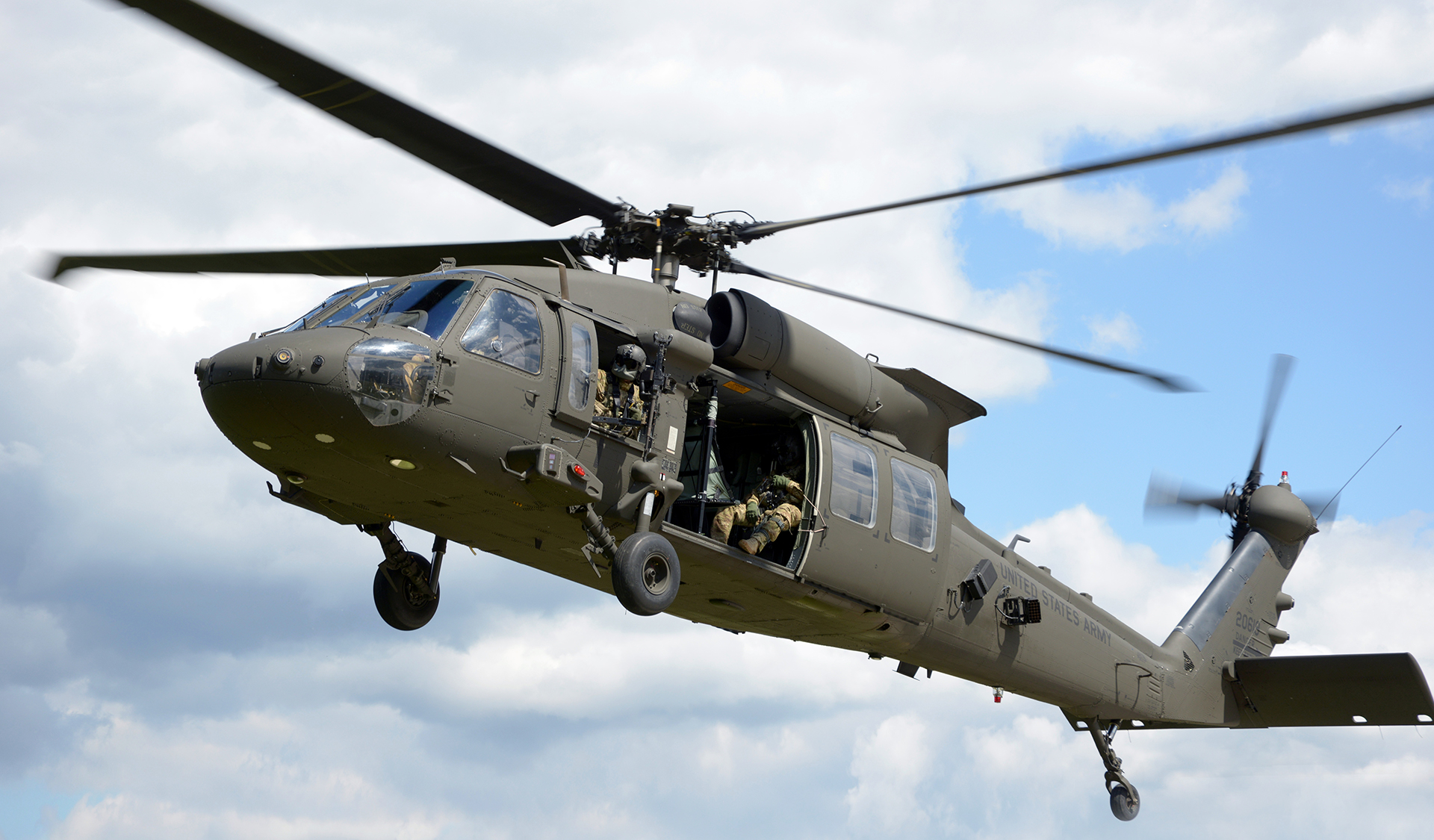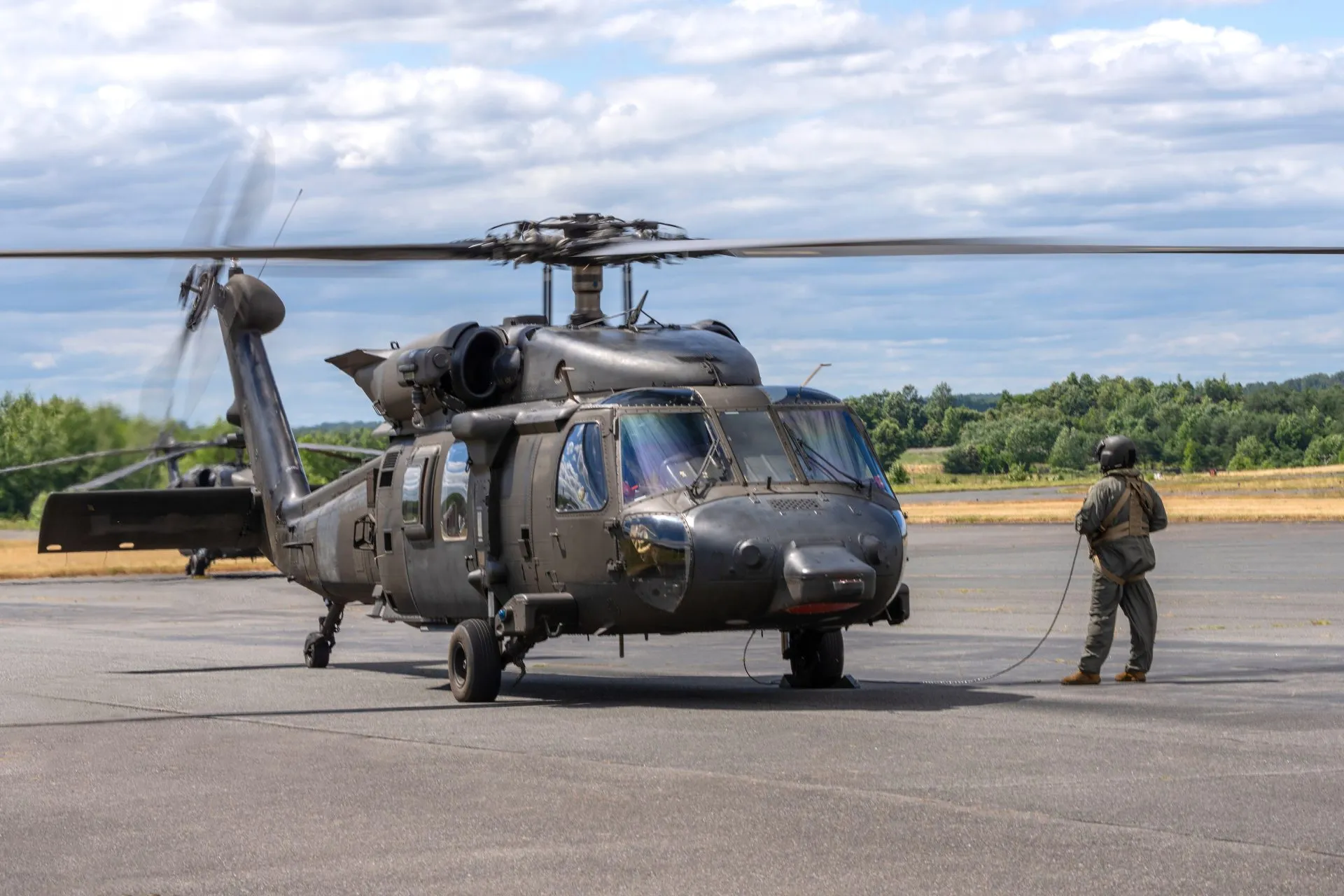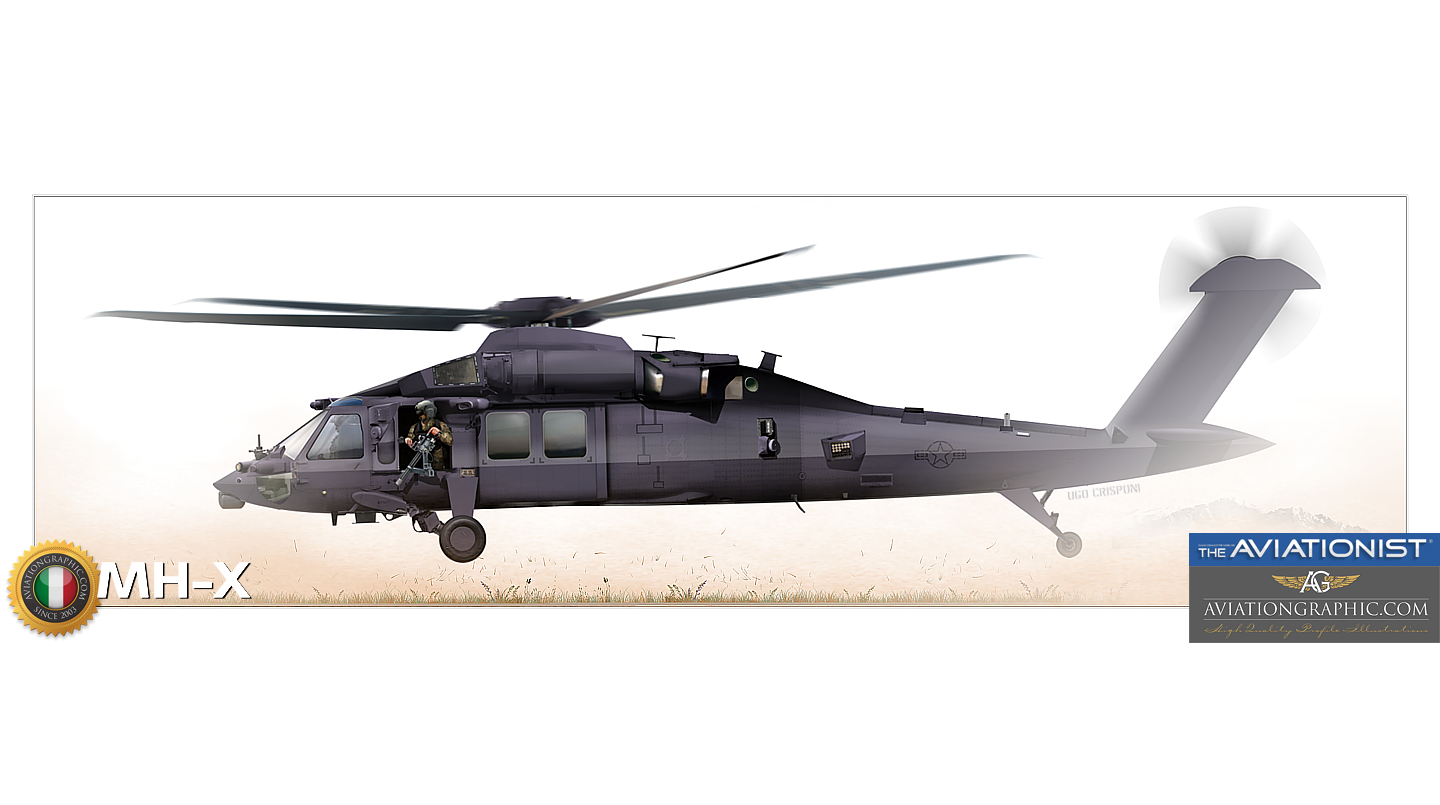Explore the Secret Roles and Goals of the Blackhawk Helicopter All Over The World
Unveiling the Power and Adaptability of the Blackhawk Helicopter
The Blackhawk helicopter stands as a testimony to engineering quality and armed forces technology, dramatically forming the landscape of modern-day airborne procedures. As we explore its background and functional capabilities, one should think about how the Blackhawk proceeds to influence modern battle methods and humanitarian initiatives alike.
History of the Blackhawk
The background of the Blackhawk helicopter is marked by considerable technical developments and a tactical advancement in armed forces air travel. Created in the late 1960s by Sikorsky Airplane, the UH-60 Blackhawk was originally conceived to change the older UH-1 Iroquois, typically referred to as the "Huey." The Blackhawk's initial flight occurred in 1974, and it was formally presented to the U.S. Army in 1979.


This aircraft was made to fulfill the requiring needs of modern-day warfare, focusing on versatility, rate, and resilience (Blackhawk Helicopter). Its ability to operate in different settings, paired with advanced avionics and style attributes, quickly established the Blackhawk as a vital property for military operations worldwide
Throughout the 1980s and 1990s, the Blackhawk saw extensive use in different conflicts, including the Gulf War and altruistic goals. Today, the Blackhawk remains a renowned sign of armed forces aviation, continuously fine-tuned to satisfy modern obstacles.
Key Features and Specs
Blackhawk helicopters are renowned for their design excellence and operational flexibility, boasting a variety of crucial attributes and requirements that enhance their effectiveness in numerous army duties. Among the most significant attributes is their dual-engine configuration, typically powered by the T700-GE-701C engines, which provide exceptional integrity and performance. The helicopter has a maximum cruise ship rate of around 150 knots and a service ceiling of about 20,000 feet, permitting it to run efficiently in diverse settings.
The Blackhawk's airframe is constructed from innovative composite products and light weight aluminum alloys, making certain a robust structure while lessening weight. It features a fully verbalized rotor system that gives exceptional dexterity and security. The helicopter can accommodate approximately 11 combat troops or bring as much as 8,000 extra pounds of outside freight, making it highly versatile for different goals.
Furthermore, the Blackhawk is outfitted with advanced avionics and interaction systems, enhancing situational recognition and objective control. Its capability to run in damaging climate conditions, incorporated with its low acoustic signature, makes it a sneaky option for tactical procedures. Overall, these functions add to the Blackhawk's reputation as a foundation of modern army air travel.
Versatile Operational Responsibilities
Popular for their design excellence and progressed abilities, Blackhawk helicopters offer a wide range of functional functions within military structures. Originally created for troop transportation, their flexibility has increased, enabling them to do various missions properly.
One of the primary functions of the Blackhawk is as an utility helicopter, facilitating logistical assistance by delivering materials and employees to and from remote locations. Additionally, they succeed in clinical emptying (MEDEVAC) operations, equipped with innovative medical devices and workers to supply vital care in the area.
In combat situations, Blackhawks can operate as armed escort platforms, supporting ground forces by involving opponent possessions while ensuring troop safety. Their capability for special procedures makes them vital; they can perform reconnaissance objectives, workers recuperation, and straight activity raids, typically in high-threat atmospheres.
Furthermore, the Blackhawk's adaptability allows it to sustain humanitarian missions and calamity response initiatives, providing help and essential services in times of dilemma. This broad range of functional roles shows the Blackhawk helicopter's unparalleled versatility, reaffirming its condition as a vital possession in modern military procedures worldwide.
Technical Technologies
Countless technical advancements add to the Blackhawk helicopter's remarkable performance and flexibility in varied functional settings. One of one of the most considerable advancements is its composite rotor blades, which enhance lift and maneuverability while decreasing weight and upkeep requirements. The blades system employs innovative click here to find out more materials that strengthen longevity and withstand environmental destruction, guaranteeing trusted operation in extreme conditions.
Additionally, the why not try here Blackhawk is furnished with a state-of-the-art avionics suite that integrates sophisticated navigation and interaction systems - Blackhawk Helicopter. This consists of GPS, radar, and multi-function display screens that help with real-time situational understanding for pilots, adding to mission success under tough situations
Additionally, the helicopter's fly-by-wire control system permits accurate handling and improved responsiveness, offering pilots with enhanced control throughout complicated maneuvers. The unification of sophisticated engine modern technology, such as the T700-GE-701C engine, further enhances efficiency, supplying boosted power result and fuel effectiveness.
Finally, modular style principles make it possible for rapid reconfiguration for various goals, from army transport to medical emptying, making the Blackhawk a functional property in military and humanitarian procedures. These technological developments jointly make sure that the Blackhawk remains a powerful visibility in the skies.
Effect On Modern War

Outfitted with innovative avionics and communication systems, the Blackhawk makes it possible for seamless coordination among ground and air devices, ensuring prompt and exact action to dynamic combat circumstances. Its adaptability permits for rapid deployment in diverse environments, from city settings to tough surfaces, mirroring the multifaceted nature of modern warfare.
In Addition, the Blackhawk's superior speed and dexterity promote fast insertion and extraction of employees, minimizing exposure to enemy fire. Its capability to run in aggressive conditions, coupled with innovative protective measures, enhances survivability and objective success prices.
As modern-day problems increasingly depend on joint procedures and fast reaction, the Blackhawk helicopter continues to be at the center of armed forces method, personifying the development of air mobility and the crucial function of air power in accomplishing calculated goals. Its effect on contemporary war continues to redefine the abilities of armed forces globally.

Verdict
To conclude, the Blackhawk helicopter exhibits the junction of sophisticated engineering and functional adaptability, strengthening its status as a keystone of modern-day armed forces air travel. Its historic value, impressive functions, and flexibility across various Get More Information goal accounts emphasize its critical role in modern war. As technological developments remain to boost its capabilities, the Blackhawk stays a necessary property for militaries around the world, showing unrivaled effectiveness in both fight and humanitarian operations.
The Blackhawk helicopter stands as a testimony to engineering quality and army technology, considerably forming the landscape of modern-day airborne procedures.The history of the Blackhawk helicopter is marked by substantial technological developments and a calculated evolution in army aviation.Blackhawk helicopters are renowned for their design excellence and functional flexibility, flaunting an array of crucial features and requirements that enhance their performance in numerous army functions.Various technological advancements add to the Blackhawk helicopter's remarkable efficiency and adaptability in varied operational atmospheres.In final thought, the Blackhawk helicopter exhibits the junction of innovative design and functional convenience, solidifying its standing as a cornerstone of modern armed forces aeronautics.